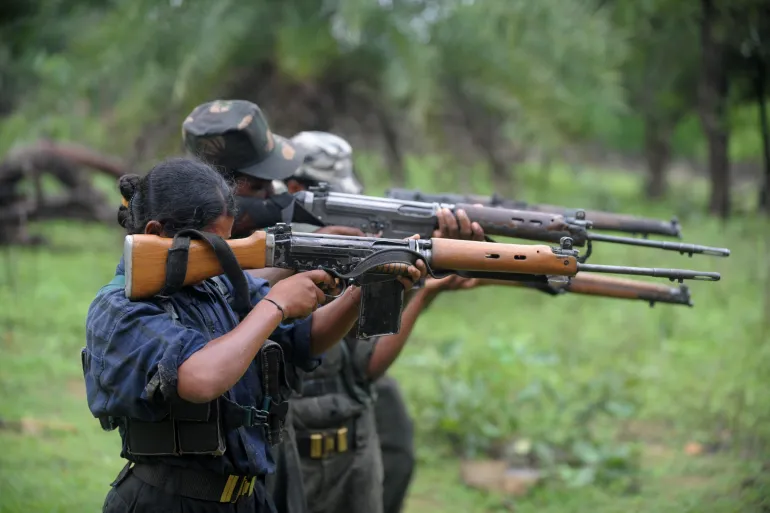India’s central forests have turned into an active warzone as government forces intensify their largest offensive in decades against Maoist rebels, aiming to break the backbone of the left-wing insurgency that has plagued the region for over 50 years. The recent operations, which have left dozens of rebels dead, are part of what officials call a “final push” to dismantle the Communist Party of India (Maoist), designated a terrorist organization by New Delhi.
The military assault spans the forested regions of Chhattisgarh, Maharashtra, Jharkhand, and Odisha, long considered Maoist strongholds. It follows the killing of top rebel leader Shankar Rao, a development hailed by Indian officials as a critical breakthrough. The Indian government now appears determined to leverage that momentum into total operational domination of the so-called “Red Corridor.”
“We are not holding back. This is the endgame for the Maoists,” a senior security official told Al Jazeera.
Background: India’s Longest Internal Conflict
The Maoist insurgency, often referred to as the Naxalite movement, began in 1967 and is rooted in agrarian grievances, land rights, and tribal oppression. Over the years, it evolved into a guerrilla war that has killed more than 12,000 people and stifled development in vast parts of central India.
Maoist rebels claim to represent the poor and landless, especially indigenous Adivasi communities, but the Indian government accuses them of exploiting vulnerable populations while engaging in extortion, bombings, and assassinations.
“Their ideology is outdated. They offer only fear, not freedom,” said Home Minister Amit Shah, defending the operation.
Operation Details and Strategy
The current offensive includes a joint deployment of federal paramilitary forces, local police, and air surveillance units. Drones and satellite imaging are being used to track rebel camps, while mobile artillery units have been deployed to remote areas where security forces previously had limited access.
Key targets include training camps, weapons caches, and communication hubs in the Abujhmad forests, where Shankar Rao was killed. Authorities say they are focusing on disrupting command chains and cutting off supply lines.
“This is no longer about sporadic encounters,” said a top officer in the Central Reserve Police Force (CRPF). “It’s a coordinated ground assault.”
Civilian Concerns and Human Rights Warnings
While the government touts operational success, human rights groups warn that the offensive could have serious consequences for civilians, particularly in tribal villages caught between the warring sides. Displacement, arbitrary arrests, and use of excessive force have been flagged in previous campaigns against the Maoists.
The People’s Union for Civil Liberties (PUCL) has demanded transparency in casualty reporting and protection for civilians during combing operations. Activists also fear that entire villages could be labeled Maoist sympathizers, leading to mass detentions or abuse.
“We must not replace one form of terror with another,” said Binayak Sen, a civil rights activist previously jailed on Maoist-related charges.
Socioeconomic and Political Stakes
Beyond the bullets, this is also a battle for control over resource-rich tribal lands. Many of the Maoist-affected regions are rich in minerals and forests, and critics argue that both insurgents and the state have neglected the welfare of local communities in pursuit of strategic control.
Prime Minister Narendra Modi’s government has promised a dual approach: a hard crackdown on armed groups and investment in infrastructure, education, and health in affected districts. However, critics say the focus has remained disproportionately militaristic.
“Development must come before force,” said Jean Dreze, an economist and social policy expert. “Otherwise, we risk repeating cycles of violence.”
What’s Next?
- Security forces are expected to intensify the push into dense Maoist-held regions over the coming weeks.
- The government is setting up special fast-track courts for captured insurgents.
- Human rights monitors are demanding access to conflict zones to observe conduct
- .Analysts warn the ideology may survive underground, even if the leadership is dismantled.
India’s war on Maoists is entering a defining phase — one that may finally tip the scales of an insurgency that has shaped the lives and deaths of millions. But as bullets fly and arrests mount, the question remains: can peace be built solely on military victory, or must it be earned with justice and inclusion?



